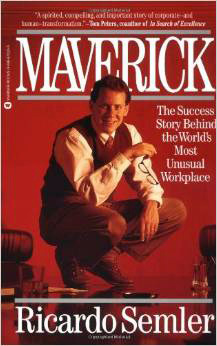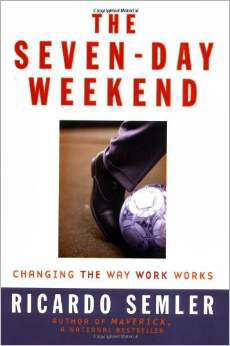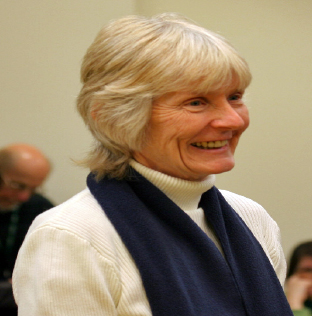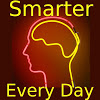Other Voices
Other Voices
 My perspective of agile value and principles has evolved not only from my personal beliefs, but has also been shaped by Other Voices. Nothing could be more symbolic of agility than just that notion -- forming our own perspectives by reaching out and understanding the perspectives of others. Here, as in the Reading Room, are some of the prominent voices I listen to and would recommend to you. Have a recommendation for me? Contact me, I'd love to hear about it.
My perspective of agile value and principles has evolved not only from my personal beliefs, but has also been shaped by Other Voices. Nothing could be more symbolic of agility than just that notion -- forming our own perspectives by reaching out and understanding the perspectives of others. Here, as in the Reading Room, are some of the prominent voices I listen to and would recommend to you. Have a recommendation for me? Contact me, I'd love to hear about it.
Why do people feel so miserable and disengaged at work? Because today's businesses are increasingly and dizzyingly complex — and traditional pillars of management are obsolete, says Yves Morieux. So, he says, it falls to individual employees to navigate the rabbit's warren of interdependencies. In this energetic talk, Morieux offers six rules for "smart simplicity." (Rule One: Understand what your colleagues actually do.)
 I don't have time for that. If there were only more hours in the day. Let's just do this quick and dirty solution, we don't have time to do it right (and we can fix it later...).
I don't have time for that. If there were only more hours in the day. Let's just do this quick and dirty solution, we don't have time to do it right (and we can fix it later...).
Do these sound familiar? Many of us have difficulty making the best use of our time, and often wonder why other people seem to have more time than we do. Here is a simple, eloquent solution for many. The Pomodoro Technique helps many instill a bit more discipline in how they work and encourages a more keen focus getting stuff done. Try it today!
People don't buy what you do, they but why you do it. -- Simon Sinek
Simon Sinek does not speak about agility, agile values or agile principles, that is not his vocabulary. His message however is one agile proponents will recognize and align with. Here is a TED Talk that is a prime example of why we should all listen to him.
A more or less impromptu intereview in a conference setting, so the recording quality it not the best. Rich Mironov nails the content as usual. Here his thoughts on the importance of product roadmapping and using it as a rudder to stear strategy.
Visualization and information radiators have always been a key compenent of agile concepts. Even so, many have a hard time with post-it notes or story maps and yearn for a formal process supported by an electronic tool. Here is a remarkable TedTalk from Tom Wujec showing the true power of visualization. There is also a wealth of additional information at his site www.drawtoast.com.
Fifth Discipline author Peter Senge shares his thoughts on the collaborative thinking that is needed in today's business environments and beyond. Key is looking at the familiar from different perspectives to truely understand the interdependencies that exist to enable learning and improvement.

 Author of breakout books Maverick and The Seven Day Weekend, Ricardo Semler has made a career of asking radical questions to improve things a step at a time. In his search for Radical Wisdom, he asks us to join him in questioning everything about what we do and why we do it, and makes good sense as he does.
Author of breakout books Maverick and The Seven Day Weekend, Ricardo Semler has made a career of asking radical questions to improve things a step at a time. In his search for Radical Wisdom, he asks us to join him in questioning everything about what we do and why we do it, and makes good sense as he does.
In their effort to continually refine and clarify what Scrum is and is not, co-creators Jeff Sutherland and Ken Schwaber talk about updating the Scrum Guide with their thoughts on the 5 Scrum values: Commitment, Focus, Respect, Courage, Openness.
 I really like articles like this one from Harvard Business Review that explain exactly what we are trying to do with agile software development without using the agile vocabulary. Instead, it uses that language of our typical business sponsors to explain why the common assumptions made about our work are wrong.
I really like articles like this one from Harvard Business Review that explain exactly what we are trying to do with agile software development without using the agile vocabulary. Instead, it uses that language of our typical business sponsors to explain why the common assumptions made about our work are wrong.
Incorrectly assuming that product development is like manufacturing, many companies try to apply zero-defect, efficiency-focused techniques to product-development processes. This mind-set and other management misperceptions have given rise to six fallacies that undermine product development:
- High utilization of resources will improve performance.
- Processing work in large batches improves the economics of the process.
- Our plan is great; we just need to stick to it.
- The sooner the project is started, the sooner it will be finished.
- The more features we put into a product, the more customers will like it.
- We will be more successful if we get it right the first time.
This article explains why these assumptions are wrong and offers ways to overcome the problems they create.
 No list of note worthy voices in the agile community and beyond could be complete without Linda Rising. She first came to my attention with the book Fearless Change and I have been a fan ever since. As the closing keynote speaker for Agile2011, she invigorated us all with her compelling view Carol Dweck's book Mindset and started down her own path as an evangelist for the Agile Mindset. Want to better understand the true meaning of "being" agile -- watch this video.
No list of note worthy voices in the agile community and beyond could be complete without Linda Rising. She first came to my attention with the book Fearless Change and I have been a fan ever since. As the closing keynote speaker for Agile2011, she invigorated us all with her compelling view Carol Dweck's book Mindset and started down her own path as an evangelist for the Agile Mindset. Want to better understand the true meaning of "being" agile -- watch this video.


